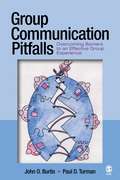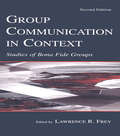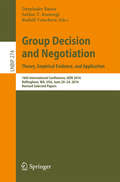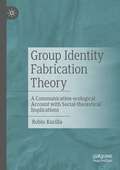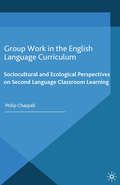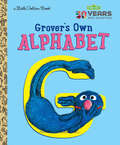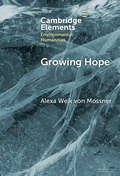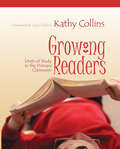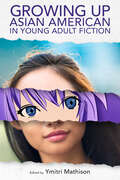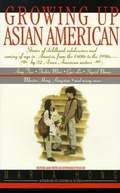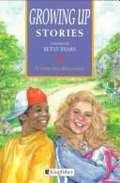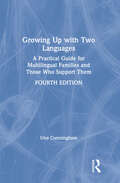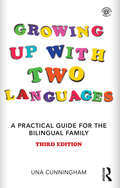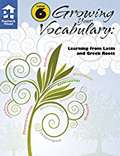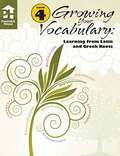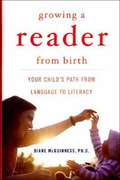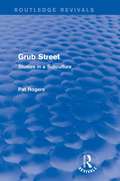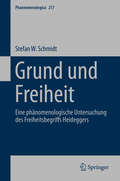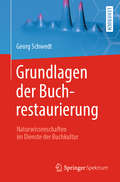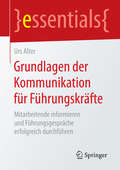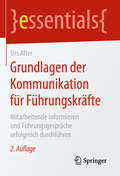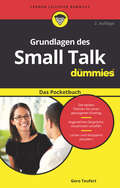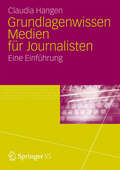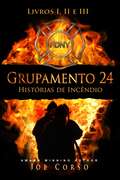- Table View
- List View
Group Communication Pitfalls: Overcoming Barriers to an Effective Group Experience
by John O. Burtis Dr Paul D. TurmanGroup Communication Pitfalls: Overcoming Barriers to an Effective Group Experience treats groups and the work involved in grouping as useful tools humans have developed for responding to pressures or demands faced by group members. This book assumes an orientation that expects and detects group pitfalls as they arise, providing students with the foundation for overcoming barriers to effective group experiences. By assuming this orientation, authors John O. Burtis and Paul D. Turman offer readers a map of the group pitfall terrain and demonstrate how people working well together can use the struggle against such pitfalls to improve their groups.
Group Communication in Context: Studies of Bona Fide Groups (Lea's Communication Ser.)
by Lawrence R. FreyThe study of group communication has never been more critical, as recent national and international events point to the fragility of group life. An emerging perspective, the bona fide group perspective, offers hope for improving group communication, for it recognizes that any group--a family, community group, expedition team, social support group, organizational work group, interorganizational collaboration, or international team--must be studied and understood within the multiple contexts in which it is embedded and that significantly affects who is considered to be part of a group, what occurs within that group, and how that group interacts with other groups. In the second edition of his award-winning volume, editor Lawrence R. Frey showcases original research studies conducted on and about communication in bona fide groups, demonstrating the conceptual promise of the bona fide group perspective as realized in research practice. Divided into six sections, the chapters cover a wide range of new or relatively understudied groups--including youth community groups, Internet support groups, climbing expedition groups, families, neighborhoods, and school boards--and demonstrate the wealth of methodological approaches that can be used to study bona fide group communication--including survey methods, interviews, textual analysis, content analysis, participant observation, and discourse analysis. Group Communication in Context: Studies of Bona Fide Groups, Second Edition shows that the bona fide group perspective has the power to transform our thinking about groups and group communication and, in time, the practices in which groups and group members engage. The volume is intended for use in group communication courses, as well as a reference for group scholars. It is also appropriate for classes in psychology, social work, counseling, sociology, anthropology, and related disciplines.
Group Decision and Negotiation. Theory, Empirical Evidence, and Application
by Deepinder Bajwa Sabine T. Koeszegi Rudolf VetscheraThis book constitutes revised selected papers from the 16th International Conference on Group Decision and Negotiation, GDN 2016, held in Bellingham, WA, USA, in June 2016. The GDN meetings aim to bring together researchers and practitioners from a wide spectrum of fields, including economics, management, computer science, engineering, and decision science. The 12 papers presented in this volume were carefully reviewed and selected from 70 submissions. They deal with the fundamental part of all decision processes and individual preferences; the situations of group decision making; the collective decision making in situations characterized by a higher level of conflict; and the group processes and negotiations in different subject areas.
Group Identity Fabrication Theory: A Communication-ecological Account with Social-theoretical Implications
by Robin KurillaTo date, there has been no comprehensive and coherent approach to determining the communicative and precommunicative processes involved in the construction of group identities. The present study fills this gap by developing a unified theoretical foundation that can be used to capture empirical construction processes. Moreover, it contributes to the domain of group communication research. It creates a basic theoretical riverbed that provides a conceptual foundation for the conception of inter- and intra-group communication, which does not take its starting point from 'objective' categories, but from de facto socialization processes. In addition, the architecture of an innovative social theory is presented using the example of the construction of group identity, which satisfies the demands of epistemological interests in communication studies and possibly also in other disciplines.
Group Work in the English Language Curriculum
by Philip ChappellThis book explores how using small groups in second language classrooms supports language learning. Chappell's experience as a language teacher equips him to present a clear, evidence-based argument for the powerful influence group work has upon the opportunities for learning, and how it should therefore be an integral part of language lessons.
Grover's Own Alphabet (Little Golden Book)
by Golden BooksGrover presents the alphabet in a Sesame Street Little Golden Book!Girls and boys ages 1 to 3 will giggle uncontrollably as Grover presents the alphabet in this Sesame Street Little Golden Book by BECOMING every letter from A to Z! As Grover twists and turns his furry blue self into 26 letters, little ones may even be inspired to try some of them.
Growing Hope: Narratives of Food Justice (Elements in Environmental Humanities)
by Alexa Weik von MossnerGrowing Hope takes a closer look at how such narratives can carry the promise of a better future in the face of grim realities. It brings together two kinds of narratives that are rarely considered in conjunction: stories about urban community gardening and stories about vegan food justice. It shows that there is much common ground between these movements and that the stories told by them are worth exploring as part of a larger narrative about creating a better and more equitable future. In the United States, this is especially true for the stories told by and about people of color and their historically marginalized communities. Employing an econarratological approach informed by critical food studies, environmental justice ecocriticism, and transmedia studies, Growing Hope explores a selection of narratives about people who fight against food injustice and the ideologies sustaining it: stories about defiant gardening and culinary self-empowerment.
Growing Readers: Units of Study in the Primary Classroom
by Kathy CollinsPrimary-grade teachers face an important challenge: teaching children how to read while enabling them to build good habits so they fall in love with reading. Many teachers find the independent reading workshop to be the component of reading instruction that meets this challenge because it makes it possible to teach the reading skills and strategies children need and guides them toward independence, intention, and joy as readers. In Growing Readers, Kathy Collins helps teachers plan for independent reading workshops in their own classrooms. She describes the structure of the independent reading workshop and other components of a balanced literacy program that work together to ensure young students grow into strong, well-rounded readers. Kathy outlines a sequence of possible units of study for a yearlong curriculum. Chapters are devoted to the individual units of study and include a sample curriculum as well as examples of mini-lessons and reading conferences. There are also four “Getting Ready” sections that suggest some behind-the-scenes work teachers can do to prepare for the units. Topics explored in these units include:print and comprehension strategies;reading in genres such as poetry and nonfiction;connecting in-school reading and out-of-school reading;developing the strategies and habits of lifelong readers. A series of planning sheets and management tips are presented throughout to help ensure smooth implementation. We want our students to learn to read, and we want them to love to read. To do this we need to lay a foundation on which children build rich and purposeful reading lives that extend beyond the school day. The ideas found in Growing Readers create the kind of primary classrooms where that happens.
Growing Up Asian American in Young Adult Fiction (Children's Literature Association Series)
by Ymitri MathisonWinner of the Children’s Literature Association’s 2020 Edited Book AwardContributions by Hena Ahmad, Linda Pierce Allen, Mary J. Henderson Couzelis, Sarah Park Dahlen, Lan Dong, Tomo Hattori, Jennifer Ho, Ymitri Mathison, Leah Milne, Joy Takako Taylor, and Traise Yamamoto Often referred to as the model minority, Asian American children and adolescents feel pressured to perform academically and be disinterested in sports, with the exception of martial arts. Boys are often stereotyped as physically unattractive nerds and girls as petite and beautiful. Many Americans remain unaware of the diversity of ethnicities and races the term Asian American comprises, with Asian American adolescents proving to be more invisible than adults. As a result, Asian American adolescents are continually searching for their identity and own place in American society. For these kids, being or considered to be American becomes a challenge in itself as they assert their Asian and American identities; claim their own ethnic identity, be they immigrant or American-born; and negotiate their ethnic communities. The contributors to Growing Up Asian American in Young Adult Fiction focus on moving beyond stereotypes to examine how Asian American children and adolescents define their unique identities. Chapters focus on primary texts from many ethnicities, such as Chinese, Korean, Filipino, Japanese, Vietnamese, South Asian, and Hawaiian. Individual chapters, crossing cultural, linguistic, and racial boundaries, negotiate the complex terrain of Asian American children’s and teenagers’ identities. Chapters cover such topics as internalized racism and self-loathing; hypersexualization of Asian American females in graphic novels; interracial friendships; transnational adoptions and birth searches; food as a means of assimilation and resistance; commodity racism and the tourist gaze; the hostile and alienating environment generated by the War on Terror; and many other topics.
Growing Up Asian American: An Anthology
by Maria HongDifferent authors give their life views on growing up Asian American.
Growing Up Stories
by Betsy ByarsA compilation of short stories and extracts from novels about turning points in life, by twenty-six authors including Judy Blume, William Saroyan, L. M. Montgomery, and Roald Dahl.
Growing Up with Two Languages: A Practical Guide for Multilingual Families and Those Who Support Them
by Una CunninghamGrowing Up with Two Languages provides a highly accessible account of the stages of language development, describes and evaluates the various systems and strategies that can be adopted and looks at the problems that can occur when a child is exposed to two languages and cultures. Combining research-informed advice and the experience of parents raising children as speakers of a wide range of languages in every populated continent in the world, this book and its associated web material will answer questions, offer tried and tested strategies to keep children speaking a minority language, and provide material to enlist the support of the extended family, teachers and others. The perspective of adults who were themselves raised speaking more than one language is included. New to this edition is a chapter focusing on families raising children as speakers of indigenous and threatened languages as well as chapters for teachers and health professionals who want to know more about multilingual child language development and how they can support parents to continue speaking their language with their children. With new and updated first-hand advice, Internet resources and examples throughout, this book also includes a chapter that introduces important recent research into multilingual children and further reading guides for those who want to know more. This book is for parents who are raising or plan to raise children as speakers of more than one language, and for the teachers and healthcare workers who meet and can support them.
Growing Up with Two Languages: A Practical Guide for the Bilingual Family
by Una CunninghamThe lives of many families involve contact with more than one language and culture on a daily basis. Growing Up with Two Languages is aimed at the many parents and professionals who feel uncertain about the best way to go about helping children gain maximum benefit from the multilingual situation. This best-selling guide is illustrated by glimpses of life from interviews with fifty families from all around the world. The trials and rewards of life with two languages and cultures are discussed in detail, and followed by practical advice on how to support the child’s linguistic development. Features of this third edition include: a dedicated website with new and updated Internet resources a new chapter giving the perspective of adults who have themselves grown up with more than one language a new chapter presenting research into bilingual language acquisition with information about further reading new and updated first-hand advice and examples throughout. Una Cunningham is an Associate Professor in Modern Languages at Stockholm University, Sweden. She and her husband, Staffan Andersson, have raised their four children to speak English and Swedish in Sweden.
Growing Your Vocabulary: Learning from Latin and Greek Roots - Book C
by Prestwick House IncFormally known as Growing Your Vocabulary: Learning from Latin and Greek Roots Book C. Students need to develop the skills to improve their vocabulary, not only because state standards require it, but because nothing will make students better readers and communicators than having the ability to understand new words. With over half a million of our vocabulary books in schools nationwide, Prestwick House has been well-known for years as the #1 source for the absolute best vocabulary programs. Now we're bringing our award-winning expertise to students in 4th-6th grade. <P><P>The twenty lessons in each book are designed to get students actively thinking about how words are formed by using interesting notes on the vocabulary words' origins, definitions, and use in sentences. Each lesson has a full week's worth of activities and exercises that will help students not only remember the definitions of new words but also put what they have learned into practice through creative writing assignments and fun games. Every chapter also includes an exercise that will help students learn to experiment with language by building new words from known roots or breaking down unfamiliar words, giving them invaluable practice in using their newly acquired root word knowledge. Synonym and antonym usage is plentiful, and out hilarious cartoons will reinforce what students have learned. Recommended for sixth grade. This is a student classroom edition.
Growing Your Vocabulary: Learning from Latin and Greek Roots Level 4
by Prestwick HouseStudents need to develop the skills to improve their vocabulary, not only because state standards require it, but because nothing will make students better readers and communicators than having the ability to understand new words. <p><P>With over half a million of our vocabulary books in schools nationwide, Prestwick House has been well-known for years as the #1 source for the absolute best vocabulary programs. Now we're bringing our award-winning expertise to students in 4th-6th grade. The twenty lessons in each book are designed to get students actively thinking about how words are formed by using interesting notes on the vocabulary words' origins, definitions, and use in sentences. Each lesson has a full week's worth of activities and exercises that will help students not only remember the definitions of new words but also put what they have learned into practice through creative writing assignments and fun games. <p><p>Every chapter also includes an exercise that will help students learn to experiment with language by building new words from known roots or breaking down unfamiliar words, giving them invaluable practice in using their newly acquired root word knowledge. Synonym and antonym usage is plentiful, and out hilarious cartoons will reinforce what students have learned. <p>Recommended for sixth grade. This is a student classroom edition. Teacher's editions are available from the publisher but are only sold to teachers and schools. <p>Designed for 4th grade students. <p>Formerly known as Growing Your Vocabulary: Learning from Latin and Greek Roots Book A.
Growing a Reader from Birth: Your Child's Path from Language to Literacy
by Diane McguinnessFrom cooing in the crib to first words and sentences, to stories and the final big leap into reading and writing, "Growing a Reader from Birth" reviews the latest research revealing just how much infants, toddlers, and preschoolers know and can express from the early months on. In chapters that cover each year of a child's language growth, seasoned researcher Diane McGuinness links this new knowledge of how babies first perceive and produce language to her own innovative program for children's later mastery of reading. McGuinness charts how a child initially makes sense of the world of sounds and symbols and then progresses from recognizing and decoding words to developing a vocabulary and using it to become a good listener, an expert reader, and an eloquent speaker. McGuinness also underscores the important role of a child's parents in healthy language development, giving tips and pointers on how parents can best facilitate a child's learning. The past decade has been prolific in the knowledge gained about language development and the parents' pivotal role. Full of fascinating insights into infant behavior, "Growing a Reader from Birth" not only illuminates the stages of language learning in children but also wisely counsels parents on how to maximize interactions with their children and be a positive force in nurturing their child's language from day one.
Grub Street: Studies in a Subculture (Routledge Revivals)
by Pat RogersFirst published in 1972, this is the first detailed study of the milieu of the eighteenth-century literary hack and its significance in Augustan literature. Although the modern term ‘Grub Street’ has declined into vague metaphor, for the Augustan satirists it embodied not only an actual place but an emphatic lifestyle. Pat Rogers shows that the major satirists – Pope, Swift and Fielding – built a potent fiction surrounding the real circumstances in which the scribblers lived, and the importance of this aspect of their writing. The author first locates the original Grub Street, in what is now the Barbican, and then presents a detailed topographical tour of the surrounding area. With studies of a number of key authors, as well as the modern and metaphorical development of the term ‘Grub Street’, this book offers comprehensive insight into the nature of Augustan literature and the social conditions and concerns that inspired it.
Grund und Freiheit
by Stefan W. SchmidtIn der vorliegenden Studie geht der Autor den mannigfaltigen Zusammenhängen von Gründung und Begründung in der Welt nach, um mit Martin Heidegger zu zeigen, dass all diese Zusammenhänge Freiheit voraussetzen, aus Freiheit hervorgehen oder doch zumindest freiheitsbedingt sind. Die Analyse des ontologischen Freiheitsbegriffs Heideggers nimmt so die Gestalt einer phänomenologischen Destruktion von ,,Grund" an. Der Fokus des Buches liegt auf Heideggers tatsächlichem Gebrauch des Begriffs ,,Freiheit". Ausgangspunkt der Untersuchung ist das Diktum ,,Die Freiheit ist der Grund des Grundes". Dieser Satz fällt in Heideggers ,,metaphysische Periode", die sich auf den Zeitraum von 1928 bis 1930 beschränkt und in der er versucht, einen positiven Begriff von Metaphysik, eine Metaphysik des Daseins, zu entwerfen. Zur Aufschlüsselung dieses Diktums konzentriert sich die Untersuchung daher auf eben jenen Zeitraum. Im ersten Kapitel wird der Begriff des Grundes systematisch und philosophiehistorisch untersucht, um unsere Praxis des Begründens offenzulegen und aufzuzeigen, wie diese Praxis bereits den Begriff von Welt präsupponiert. Das zweite Kapitel widmet sich Heideggers positivem Verständnis von Freiheit und weist nach, wie die beiden Begriffe ,,Grund" und ,,Freiheit" mittels des Weltbegriffs miteinander verwoben sind. Das dritte Kapitel zieht ein Resümee und setzt die Ergebnisse in einen breiteren phänomenologischen Kontext, der nicht allein auf Heidegger beschränkt bleibt. Das vierte und letzte Kapitel setzt sich mit den ethischen Implikationen von Heideggers ontologischem Freiheitsbegriff auseinander.
Grundlagen der Buchrestaurierung: Naturwissenschaften im Dienste der Buchkultur
by Georg SchwedtWie kann man historische Buchbestände vor dem Verfall bewahren? Und wie kann man in Mitleidenschaft gezogene Bücher restaurieren? Dieses Werk befasst sich mit den physikalisch-chemischen Grundlagen der Buchrestaurierung. Es beschreibt die historisch verwendeten Materialien und die heute üblichen Verfahren der Erhaltung des Kulturgutes "Buch".
Grundlagen der Kommunikation für Führungskräfte: Mitarbeitende informieren und Führungsgespräche erfolgreich durchführen (essentials)
by Urs AlterDr. Urs Alter zeigt auf, wie Führungskräfte im Bereich der Kommunikation am zeitsparendsten zu fundiertem Wissen kommen, das sie wirklich brauchen und anwenden können. Das Essential informiert schnell, unkompliziert und auf leicht verständliche Weise über alle jene Aspekte, die für Führungskräfte in der Kommunikation mit Mitarbeitenden wichtig sind. Im Zentrum des Praxisbezugs stehen dabei Informieren als Führungsaufgabe und das Vorgehen bei Gesprächen mit Mitarbeitenden.
Grundlagen der Kommunikation für Führungskräfte: Mitarbeitende informieren und Führungsgespräche erfolgreich durchführen (essentials)
by Urs AlterDr. Urs Alter zeigt auf, wie Führungskräfte im Bereich der Kommunikation am zeitsparendsten zu fundiertem Wissen kommen, das sie wirklich brauchen und anwenden können. Das Essential informiert schnell, unkompliziert und auf leicht verständliche Weise über alle jene Aspekte, die für Führungskräfte in der Kommunikation mit Mitarbeitenden wichtig sind. Im Zentrum des Praxisbezugs stehen dabei Informieren als Führungsaufgabe und das Vorgehen bei Gesprächen mit Mitarbeitenden.
Grundlagen des Small Talk für Dummies Das Pocketbuch (Für Dummies)
by Gero TeufertSmall Talk ist der gekonnte Start, um erfolgreiche Verbindungen zu Menschen zu knüpfen. Egal ob privat, auf Messen, beim Geschäftsessen, auf der Reise oder beim Vorstellungsgespräch: Wenn andere Sie mögen, öffnen sich Ihnen viele neue Möglichkeiten. Worüber aber reden, wenn es eigentlich nichts zu sagen gibt? Wie an Menschen anknüpfen, über die man nichts weiß? Wie überwindet man die Sprachlosigkeit, zeigt sich spontaner und gesprächsbereiter? Gero Teufert zeigt Ihnen in diesem Buch Techniken und Strategien, geht auf Themen und verschiedene Gesprächssituationen ein und verrät die Tricks guter Small Talker, mit denen Sie bei Ihrem Gesprächspartner Sympathien erzeugen.
Grundlagenwissen Medien für Journalisten
by Claudia HangenDer Band bietet eine kompakte Einführung in die Grundlagen der Medien insbesondere für Studierende mit dem Berufswunsch Journalismus und für Berufseinsteiger. Er behandelt die verschiedenen Ausbildungswege ebenso wie medienethische Fragen, ökonomische, medienrechtliche und medienpolitische Grundlagen. Ein besonderer Schwerpunkt liegt auf den Veränderungen im Journalismus und den Medien durch Internet, Twitter, Facebook & Co, was die Autorin am Beispiel der Jasmin-Revolution in der arabischen Welt und der Krisen der New Economy 2001 und der Finanzkrise 2008/2009 veranschaulicht.
Grupamento 24: Histórias de Incêndio - Livros I, II e III
by Joe Corso Raimundo Alves dos SantosGrupamento 24: Histórias de incêndio - Livros I, II e III de Joe Corso Histórias verdadeiras do Corpo de Bombeiros de Nova York que aconteceram entre 1963 e 1975. Agora, tudo em um único livro, Grupamento 24 por Joe Corso: As Histórias de Incêndio - Livros I, II, e III, incluindo as premiadas histórias de incêndio: Garagem 598! Grupamento 24: Histórias de incêndio - Livros I, II e III narram a carreira de Joe D' Albert, autor conhecido como Joe Corso, quando era bombeiro da cidade de Nova York. Nesta compilação emocionante de histórias de incêndio, Corso detalha os triunfos e as tragédias de seus camaradas de armas enquanto combatem bravamente alguns dos incêndios mais perigosos na história da cidade. Ele fala de heróis reais e das amizades para a toda vida que fez, bem como alguns dos tumultos que existiam na cidade de Nova York durante o tempo em que servia no departamento. Siga Corso pelos anos 1960 e 1970 até os dias de hoje, dos conflitos raciais ao 11 de setembro, quando as chamas reais da instabilidade foram extinguidas pelas pessoas mais bravas na história americana recente. Gênero: História / Historiografia Gênero Secundário: História / Referência Idioma: Português Palavras chave Número de palavras: 47.111 Informações de venda: Quando eu era um bombeiro, às vezes fazia anotações sobre os incêndios que combatia. Este livro é uma compilação dessas anotações. Um trailer deste livro pode ser visto no Youtube: Acesse o link: https://www.youtube.com/watch?v=7COvCUgW8uE
